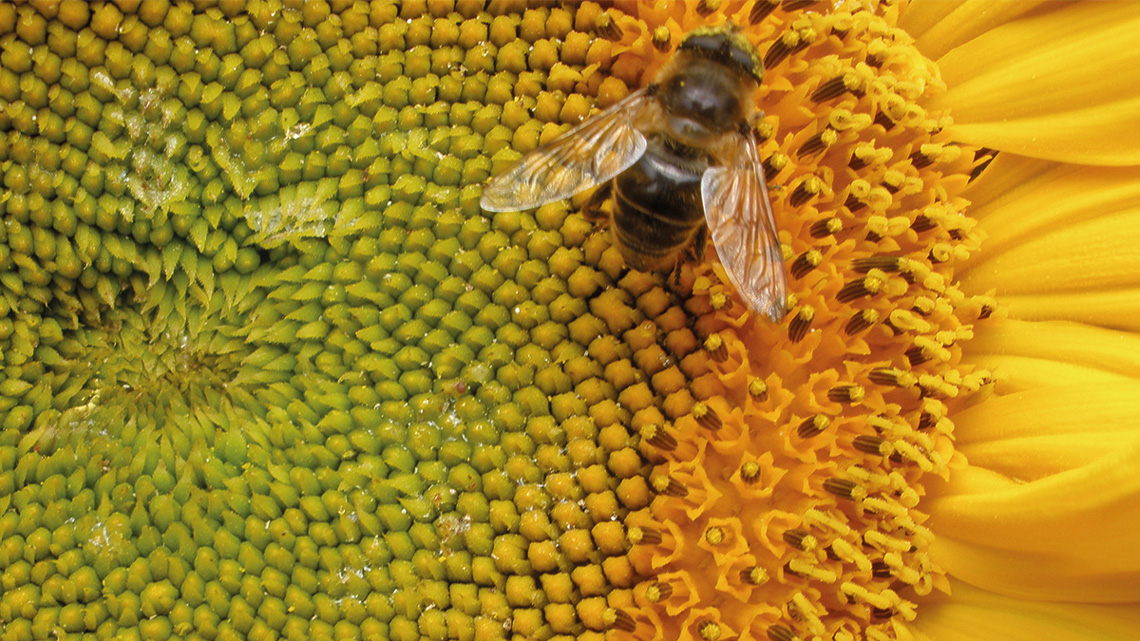In 2016, scientists from the University of California, Davis, USA, showed that the sunflower has a biological clock that allows it to follow the sun from east to west while it grows. The adult plants turn only to the east, because the flowers heat up and attract more pollinating insects when they receive the first light of the morning. Now, a team from UC Davis and the University of Pretoria, South Africa, has verified that the circadian clock controls the maturation of the hundreds of tiny flowers that form concentric circles in the head of the adult sunflower. The youngest flowers are in the center of the disk and the most mature ones at the edges. Moving from the outside in, the flower opens the male part to expose the pollen one day and opens the stigma—the female structure—to receive pollen the next. Pollinating bees land on the petals around the edge and then walk towards the center, carrying the pollen from one flower to the stigma of another, ensuring formation of the seeds. In animals, which are also regulated by cellular and biochemical mechanisms, circadian rhythms determine sleep and hunger schedules (Science, August 5, 2016; eLife, January 13; NSF Newsletter, February 6, 2023).
RepublishBiology
The clock that regulates sunflowers

Bees carry pollen from the outer male flowers to the inner female flowers
Onderwijsgek / Wikimedia Commons

